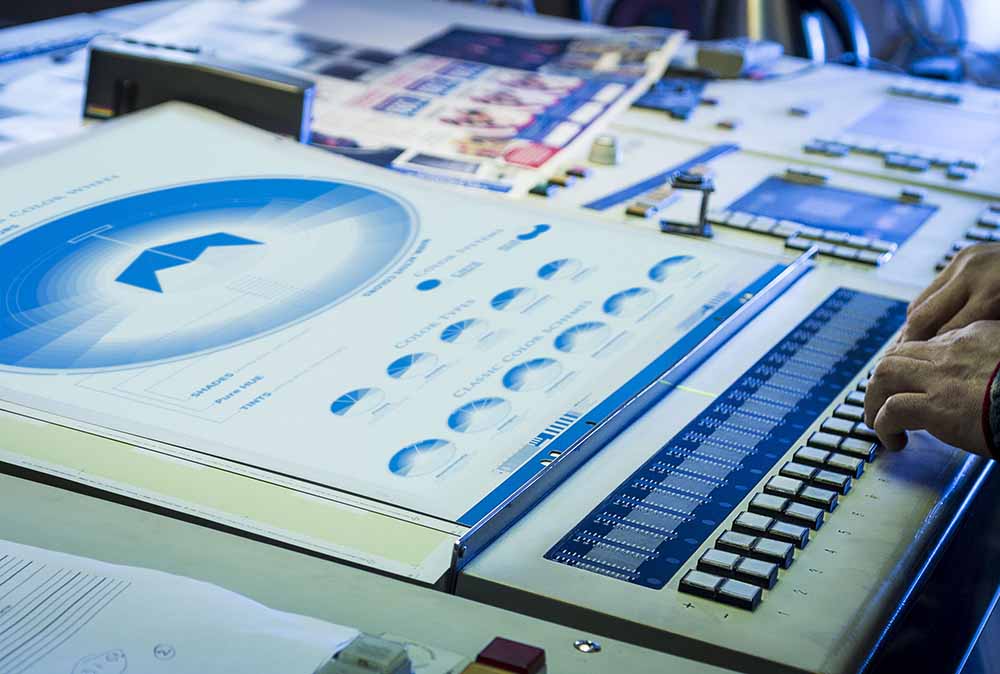Pre-press is a printing industry term which refers to all the print production functions that take place from the moment the files are sent to the printer to the actual printing.
The First Stage: Pre-Flighting
Once the graphics file has been created by the designer, it undergoes the first pre-press stage – the pre-flight.
During the pre-flight stage, the file is checked to make sure that it has all of the supporting elements needed to print correctly, such as the images and fonts. Images are checked for proper format, color space, resolution, and all must be in the right format. The PMS/CMYK colors are set up appropriately, all layout elements such as margins, crop marks and bleeds are properly set up.
Depending on the software used to create the original graphics file, sometimes the entire file needs to be converted to a format better suited for commercial printing like an Adobe PDF (Portable Document Format). The PDF file format is a solid standard to exchange pages, ranging from single ads to complete publications. Using a PDF is, however, no guarantee that the receiver of a file can actually output it as intended. To make sure that a file matches the requirements to reproduce its correctly, it needs to be checked or ‘preflighted’.
In a nutshell, all technical elements are checked for potential errors that could affect the appearance of the printed product.
The Second Stage: Creating a Proof
After the graphics file passes the pre-flight stage, it moves on to the second pre-press stage – creating a proof. A proof is an accurate representation of how the finished piece will appear when it is printed.
On many projects, such as business cards or postcards, a proof is often created as a PDF.
Also, Print-ready PDF files should be made after the layout using preflight. The proof should be printed out in high-resolution and checked by the client. The imposition proof, which is usually done by the printers, should also be printed out to check and adjust the printing press.
In addition to avoiding any unexpected errors, the proof stage purpose is to assure that the client and printer are in complete agreement on the desired outcome.
The Third Stage: Printing Plates (for Offset Presses)
Once the proof has been approved, the project is now ready for production on a printing press. If the project is to be produced on a Digital printing press, the pre-press process is complete. This is because the graphics file can be electronically transferred directly to the Digital press for output without the need for printing plates.
However, if the project is to be produced on an Offset press, it will need printing plates. Which is the final stage of the pre-press process – the creation of printing plates. Printing plates are custom made for each job and provide the method for transferring the inked images to the proper place on the paper.



